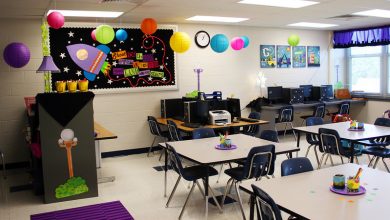Robots in the Classroom

Welcome to the “This Week in Parenting Research” a bimonthly column where we explore new and interesting research about kids or parenting.
This week I saw an interesting study out of NYU about the use of technology, specifically robots, in elementary school classrooms. The findings were actually presented as a conference paper, but they were also written up here. This was a bit of a proof of concept study, exploring different types of technology and how they worked in a traditional classroom.
Why study technology in the classroom?
By 2010, over 97% of classrooms in the US had at least one computer. The overall ratio of students to computers was 5 to 1 at that point, and with the prevalence of tablets this ratio is likely to drop. The researchers noted that technology in the classroom was often used the way it is in real life, with kids looking at personal or semi-personal devices that only one person could really be engaged with at a time. The researchers here wanted to rethink that and see if they could combine traditional group learning with technology aids.
So what technology did they use?
They got a robot named Quinn. Quinn is a LEGO robot who helps kids with geometry lessons by puttering around on a large mat of Cartesian coordinates:

Quinn’s “face” is an iPod touch that provides expressions and voice feedback. Another iPod touch is the controller and is held by a student. The students have to touch Quinn to activate him, then they get a problem on their handheld device. Using the controller, they must move Quinn to the spots or spots that answer the problem correctly.
As a control, they actually created a second computer program that did all the same things, but this time Quinn was just an icon on a screen as opposed to a tangible object.
So how did they study this?
They offered to let teachers bring their classes to a classroom they had set up. 12 teachers from 4 schools came, bringing kids in the 3rd-5th grade. The kids and teacher would come in to a classroom with different “stations” and the kids would rotate through. Since the goal was to track experiences and work on the concept, there was no randomization.
They let teachers report on how they felt their students did both with the robot and the more traditional computer program.
What did they find?
Overall, kids were really excited by the robot. The teachers noted far more participation and collaboration when the robot was being used, as kids were excited to help each other with each problem. With the regular computer program, kids who were not in the “drivers seat” appeared to get bored and wander off quickly (I’m sure anyone who has ever had to look over someones shoulder when they are playing video games can relate). However, not all kids got involved, and there was a learning curve with the technology.
The researcher distilled this down to 4 areas to target for improvement:
- Broaden the learning objectives for the robot system
- Emphasize the student collaboration opportunities
- Make the training easier
- Try to reuse technology the school may already have
Thoughts and Conclusions
The use of robots in the classroom is an interesting concept, and I’m excited it’s being studied. Even reading about Quinn made me want one! While this technology is exciting, it’s important to realize what we do and don’t know. This study was designed to look at experiences, so we don’t actually know what the outcomes would be if kids were tested on their geometry knowledge later. We don’t know if this works for some kids better than others…it seems plausible that extroverted kids may get a lot out of the group work, and introverted kids may get less. Additionally, the set up cost may be a big factor in schools adopting this technology, and it seemed like teachers were concerned about the narrow applications. As with any technology, you have to figure out if the cost of the system is worth the benefit over more traditional and cheaper methods of learning. While you can see clearly how a robot would help with geometry, I wonder how this could be used for other subjects. It’s also worth noting that the teachers involved here volunteered and are likely to be more open to technology than those who did not volunteer.
Overall it’s an interesting concept, and one that I hope gets improved upon. Student engagement is a goal for many teachers, and Quinn certainly looks promising on that level. Looking forward to more research to come!




